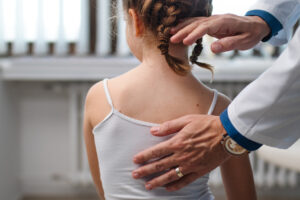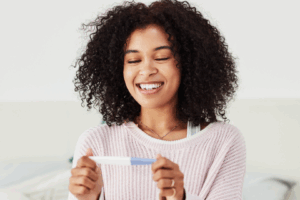Puberty is a good time to introduce breast health awareness
Breast development is one of the many changes that occur during puberty, and an ideal time to introduce young women to breast self-examinations. The goal of these self-examinations in adolescents should never be to identify problems. Instead, the focus needs to be on becoming familiar with the look and feel of normal breast tissue. More specifically, a young woman should be encouraged to learn what is normal for her as she becomes increasingly more comfortable with her own, unique body. This not only promotes self-confidence and overall wellness, it also empowers young women to take responsibility for their health at an early age. The better a girl knows her body, the healthier she can be.
Breast education can easily be included in discussions about puberty and the first menstrual period. It may help to approach the subject as an ‘owner’s guide’ for her newly developing breasts, included with a conversation about bras and reassurance about the changes she is experiencing. Don’t forget to remind her that breasts of all shapes and sizes are considered beautiful and that it’s perfectly normal for a woman’s left and right breasts to be different from one another. Such discussions can be initiated by a parent, doctor, or any woman with whom the adolescent feels comfortable. Taking the time to offer proper instruction at puberty provides young women with a skill they can use throughout their lives. I recommend visiting our breast self exam article for simple instructions on how to perform a breast self-exam.
I always remind my patients that at some point they will likely encounter small lumps or other breast changes about which they may be unsure. Young women can anticipate their breasts may feel swollen, sensitive, and tender around the time of their menstrual periods. This should not cause concern. However, the following breast changes in a woman of any age should be discussed with a physician:
- A red, hot, or swollen breast
- Fluid or bloody discharge from your nipple
- Swelling in your armpit or near your collarbone
- Skin irritation or dimpling
- Breast pain not associated with your period
- A new lump or noticeable change in an old lump
If an adolescent girl experiences any of these issues, make an appointment to have it checked. But, keep in mind that developing breast cancer as a teenager is extremely rare. Most breast abnormalities found in young women are due to benign, non-cancerous conditions. These benign breast conditions are common in women of all ages during the reproductive years when hormonal changes keep breasts in a constant state of flux from puberty to pregnancy to menopause. Most breast changes, like benign lumps, come and go on their own. Other changes may remain a permanent yet harmless part of the breast architecture. The value in breast self-examination is to have that baseline understanding of “has always been there,” making it easier to identify any new issues that may develop. By laying the groundwork for these and other healthy lifestyle practices at puberty, you will help your daughter for a lifetime.
The Star and Barry Tobias Women’s Health Center at CentraState Medical Center, with its all-female staff, offers a complete spectrum of high-quality wellness, diagnostic, treatment and counseling services for women of all ages. Conveniently located under one roof, the Center features the latest healthcare technological advances, an unrivaled nursing team and board-certified doctors specializing in women’s health. To learn more, visit centrastate.com/womens-health-center or call (732) 294-2626.





